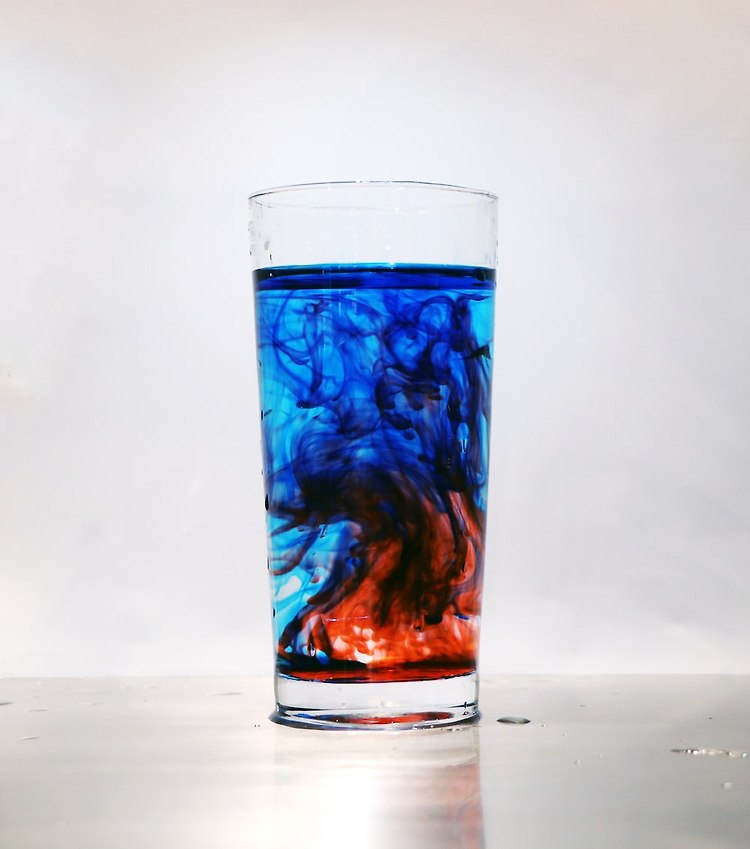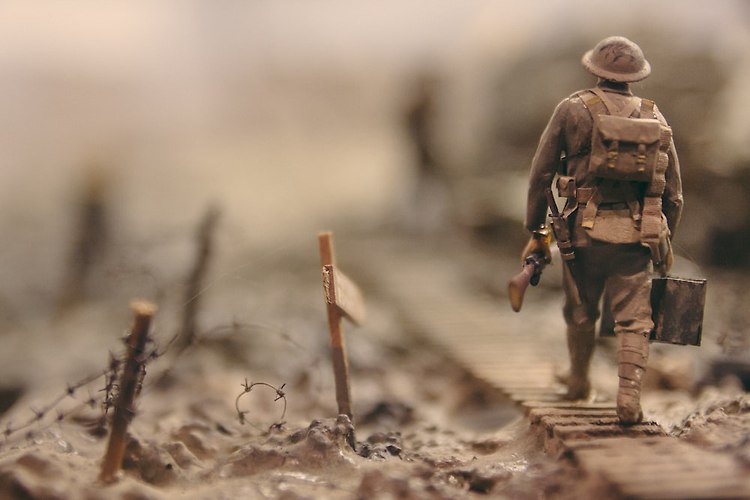

소개
반응 확산 시스템은 복잡한 시스템에서 반응과 확산 과정 사이의 상호 작용을 설명하는 수학적 모델이다. 이 용어는 반응 속도가 반응물의 농도에 따라 달라지고 확산 속도는 반응물의 공간적 구배에 따라 달라지는 화학 반응의 역학을 설명하는 일련의 미분 방정식을 가리킨다. 이 시스템은 패턴, 진동 및 불안정성을 연구하는 데 사용되는 생물학, 화학, 물리학 및 공학을 포함한 다양한 분야에서 광범위한 응용 분야를 가지고 있다.
정의
반응 확산 시스템은 종종 편미분 방정식(PDE) 시스템으로 표현되며, 각 방정식은 특정 구성 요소의 시간적 진화를 설명한다. 가장 간단한 형태의 반응 확산 시스템은 두 개의 방정식으로 구성되어 있으며, 첫 번째 방정식은 반응물의 시간적 진화를 설명하고, 두 번째 방정식은 제품의 시간적 진화를 설명한다. 예를 들어, 다음 PDE 시스템은 단일 반응물과 단일 생성물의 반응 확산을 설명합니다:
$$\frac{\partial u}{\partial t} = D \frac{\partial^2 u}{\partial x^2} + f(u)$$ $$\frac{\partial v}{\partial t} = D \frac{\partial^2 v}{\partial x^2} - f(u)$$
여기서 $u$와 $v$는 각각 반응물과 제품 농도이며, $D$는 확산 계수이고, $f(u)$는 반응 속도를 설명하는 함수이고, $x$는 공간 좌표이다.
정리
반응 확산 시스템은 종종 선형 안정성 분석, 분기 이론 및 수치 시뮬레이션과 같은 수학적 기술을 사용하여 분석된다. 반응 확산 시스템의 분석에 사용되는 가장 일반적인 정리는 선형 안정성 정리로, 균질 정상 상태의 안정성은 해당 선형화된 시스템의 고유값에 달려 있다고 명시한다. 예를 들어, 고유값이 음의 실제 부분을 가지고 있다면, 정상 상태는 안정적이며, 작은 섭동은 시간이 지남에 따라 감소한다.
반응 확산 시스템의 분석에서 또 다른 중요한 정리는 튜링 불안정성 정리로, 반응물의 확산 계수가 충분히 높으면 균일한 정상 상태가 불안정해질 수 있다고 말한다. 이러한 불안정성은 다른 파장과 진폭이 특징인 줄무늬, 나선형 및 반점과 같은 공간 패턴의 형성을 초래한다.
성질
반응 확산 시스템은 안정성, 불안정성, 패턴 형성, 진동 및 혼돈을 포함한 다양한 특성을 나타낸다. 이러한 시스템의 특성은 반응 속도 함수, 확산 계수 및 공간 영역의 형태에 의해 크게 결정된다. 예를 들어, 반응 속도 함수가 비선형이라면, 시스템은 분기, 혼돈 및 패턴 형성과 같은 복잡한 행동을 나타낼 수 있다.
반응 확산 시스템은 또한 고정 패턴, 이동파 및 진동과 같은 다양한 시공간 패턴을 나타낸다. 이러한 패턴은 종종 공간적, 시간적 대칭뿐만 아니라 안정성과 안정성이 특징이다.
예시
두 반응물인 $u$와 $v$ 사이의 상호 작용을 설명하는 다음 반응-확산 시스템을 고려하십시오:
$$\frac{\partial u}{\partial t} = D_1 \frac{\partial^2 u}{\partial x^2} + f(u,v)$$
해결책
이 시스템은 선형 안정성 분석과 수치 시뮬레이션을 사용하여 분석할 수 있다. 예를 들어, $f(u,v) = u - u^3 - av$인 경우, 여기서 $a$는 상수이며, 균질 정상 상태는 $u = \pm \sqrt{a}$와 $v = \frac{u^3}{a}$로 주어진다. 이 정상 상태를 둘러싼 선형화된 시스템은 다음과 같다:
$$\frac{\partial u}{\partial t} = D_1 \frac{\partial^2 u}{\partial x^2} + (1-3u^2)u - av$$ $$\frac{\partial v}{\partial t} = D_2 \frac{\partial^2 v}{\partial x^2} - \frac{3u^2}{a}v$$
선형화된 시스템의 고유값은 표준 기술을 사용하여 계산할 수 있으며, 안정성은 실제 부분에 따라 결정될 수 있다. 예를 들어, $D_1 > 0$ 및 $D_2 > 0$인 경우, 정상 상태는 $a < 0$인 경우 안정적이며, $a > 0$인 경우 불안정합니다. 불안정성은 숫자 시뮬레이션을 사용하여 연구할 수 있는 줄무늬, 나선형 및 반점과 같은 시공간 패턴의 형성을 초래한다.
응용 프로그램
반응 확산 시스템은 생물학, 화학, 물리학 및 공학을 포함한 다양한 분야에서 광범위한 응용 분야를 가지고 있다. 생물학에서, 그들은 동물 코트 패턴, 잎 정맥 및 박테리아 식민지의 패턴 형성을 연구하는 데 사용된다. 화학에서, 그들은 촉매 반응, 화학 역학 및 재료 과학에서 반응 확산 과정을 연구하는 데 사용된다. 물리학에서, 그들은 열 대류와 유체역학 난기류와 같은 비균형 시스템에서 패턴 형성을 연구하는 데 사용된다. 공학에서, 그들은 표면 패터닝, 박막 증착 및 포토닉 결정의 패턴 형성을 연구하는 데 사용된다.
결론
반응 확산 시스템은 복잡한 시스템에서 반응과 확산 과정 사이의 상호 작용을 설명하는 강력한 수학적 모델이다. 그들은 다양한 분야에서 광범위한 응용 분야를 가지고 있으며, 안정성, 불안정성, 패턴 형성, 진동 및 혼돈을 포함한 다양한 특성을 나타낸다. 이러한 시스템의 분석은 선형 안정성 분석, 분기 이론 및 수치 시뮬레이션과 같은 수학적 기술의 조합을 필요로 한다.
키워드
반응 확산, 부분 미분 방정식, 선형 안정성, 튜링 불안정성, 시공간 패턴, 생물학, 화학, 물리학, 공학, 수치 시뮬레이션.
Introduction
Reaction-Diffusion systems are mathematical models that describe the interactions between the processes of reaction and diffusion in complex systems. The term refers to a set of differential equations that describe the dynamics of chemical reactions, where the reaction rate depends on the concentration of reactants, and the diffusion rate depends on the spatial gradient of the reactants. These systems have a wide range of applications in various fields, including biology, chemistry, physics, and engineering, where they are used to study patterns, oscillations, and instabilities.
Definitions
Reaction-Diffusion systems are often represented by systems of partial differential equations (PDEs), where each equation describes the temporal evolution of a specific component. The simplest form of reaction-diffusion systems consists of two equations, where the first equation describes the temporal evolution of the reactants, and the second equation describes the temporal evolution of the products. For example, the following system of PDEs describes the reaction-diffusion of a single reactant and a single product:
$$\frac{\partial u}{\partial t} = D \frac{\partial^2 u}{\partial x^2} + f(u)$$ $$\frac{\partial v}{\partial t} = D \frac{\partial^2 v}{\partial x^2} - f(u)$$
where $u$ and $v$ are the reactant and product concentrations, respectively, $D$ is the diffusion coefficient, $f(u)$ is a function that describes the reaction rate, and $x$ is the spatial coordinate.
Theorems
Reaction-Diffusion systems are often analyzed using mathematical techniques, such as linear stability analysis, bifurcation theory, and numerical simulations. The most common theorem used in the analysis of reaction-diffusion systems is the linear stability theorem, which states that the stability of a homogeneous steady state depends on the eigenvalues of the corresponding linearized system. For example, if the eigenvalues have negative real parts, the steady state is stable, and small perturbations decay over time.
Another important theorem in the analysis of reaction-diffusion systems is the Turing instability theorem, which states that a homogeneous steady state can become unstable if the diffusion coefficient of the reactant is high enough. This instability results in the formation of spatial patterns, such as stripes, spirals, and spots, which are characterized by different wavelengths and amplitudes.
Properties
Reaction-Diffusion systems exhibit a variety of properties, including stability, instability, pattern formation, oscillation, and chaos. The properties of these systems are largely determined by the form of the reaction rate function, the diffusion coefficient, and the spatial domain. For example, if the reaction rate function is nonlinear, the system can exhibit complex behaviors, such as bifurcations, chaos, and pattern formation.
Reaction-Diffusion systems also exhibit a variety of spatiotemporal patterns, such as stationary patterns, traveling waves, and oscillations. These patterns are often characterized by their spatial and temporal symmetry, as well as their stability and stability.
Example and Solution
Consider the following reaction-diffusion system, which describes the interactions between two reactants, $u$ and $v$:
$$\frac{\partial u}{\partial t} = D_1 \frac{\partial^2 u}{\partial x^2} + f(u,v)$$
Solution
This system can be analyzed using linear stability analysis and numerical simulations. For example, if $f(u,v) = u - u^3 - av$, where $a$ is a constant, the homogeneous steady state is given by $u = \pm \sqrt{a}$ and $v = \frac{u^3}{a}$. The linearized system around this steady state is given by:
$$\frac{\partial u}{\partial t} = D_1 \frac{\partial^2 u}{\partial x^2} + (1-3u^2)u - av$$ $$\frac{\partial v}{\partial t} = D_2 \frac{\partial^2 v}{\partial x^2} - \frac{3u^2}{a}v$$
The eigenvalues of the linearized system can be calculated using standard techniques, and their stability can be determined based on their real parts. For example, if $D_1 > 0$ and $D_2 > 0$, the steady state is stable if $a < 0$, and unstable if $a > 0$. The instability results in the formation of spatiotemporal patterns, such as stripes, spirals, and spots, which can be studied using numerical simulations.
Applications
Reaction-Diffusion systems have a wide range of applications in various fields, including biology, chemistry, physics, and engineering. In biology, they are used to study pattern formation in animal coat patterns, leaf venation, and bacterial colonies. In chemistry, they are used to study reaction-diffusion processes in catalytic reactions, chemical kinetics, and material science. In physics, they are used to study pattern formation in nonequilibrium systems, such as thermal convection and hydrodynamic turbulence. In engineering, they are used to study pattern formation in surface patterning, thin film deposition, and photonic crystals.
Conclusion
Reaction-Diffusion systems are powerful mathematical models that describe the interactions between the processes of reaction and diffusion in complex systems. They have a wide range of applications in various fields, and they exhibit a variety of properties, including stability, instability, pattern formation, oscillation, and chaos. The analysis of these systems requires a combination of mathematical techniques, such as linear stability analysis, bifurcation theory, and numerical simulations.
Keywords
Reaction-Diffusion, Partial Differential Equations, Linear Stability, Turing Instability, Spatiotemporal Patterns, Biology, Chemistry, Physics, Engineering, Numerical Simulations.

You know what's cooler than magic? Math.
포스팅이 좋았다면 "좋아요❤️" 또는 "구독👍🏻" 해주세요!



